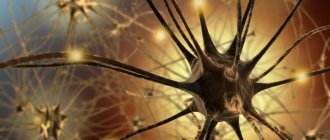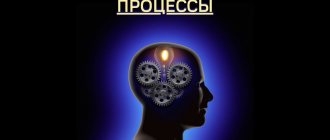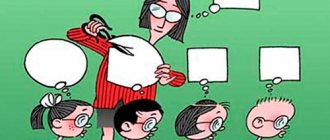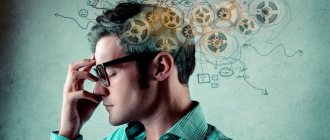The human brain is still the biggest mystery. However, thanks to the rapid development of neuroscience, we have learned to control his condition. Meditation and relaxation, developmental and intellectual exercises, neurofeedback training - all these are techniques aimed at training our brain. We tell you how it works and why it is needed. Olga Chashchina, psychotherapist, Ph.D., specialist in neurotechnology at X-Clinic, helped us understand the intricacies of this issue.
Exercise for the brain
Exercising your brain, like exercising your body, helps us stay young and energetic. When playing sports, muscle tissue is formed, the body becomes elastic and toned, approximately the same principle is observed when working with the brain: with regular exercise, new neural connections are formed, which affect psychological flexibility and the ability to adapt to different conditions. Moreover, as in the situation with the body, systematicity is an important condition for strong and sustainable health.
You can train your consciousness and brain in a variety of ways, for example, to improve concentration, puzzles, video games, various exercise equipment and speed reading are suitable. You can improve your memory and relieve stress through meditation and mindfulness practice. There are also methods that combine all this, based on the latest research in the field of neurophysiology, for example, neurofeedback training.
Find out more about it
You don't need to be Da Vinci to sharpen your mind, says Michael Candle.
The first person to write about the use of two-handed writing in personal therapy was art therapist Lucia Capaccione, who published The Power of the Other Hand in 1988. Her numerous works and publications describe how this technique can be used for the creativity and development of adults, adolescents and children. The exercises she suggests make it easier to learn two-handed writing - like riding a bicycle, this is a path from awkwardness and clumsiness to simplicity and naturalness. In 2022, another book by Capaccione was published in Russia - “The Art of Finding Yourself. Expressive diary."
Meditation
There are many different meditation techniques, but let's focus on the most seemingly simple one - sit in silence with your eyes closed, focusing on your breathing. Even such a seemingly simple exercise can cause a lot of obstacles. For the first time, it will be extremely difficult to sit for even a minute without annoying thoughts overwhelming your consciousness. However, by gradually stopping your stream of consciousness and returning to your breathing, you will help your brain reset. Daily practices help to get rid of anxiety, reduce the impact of stress and learn to control attention.
Research shows that those who practice meditation every day have a thicker layer of gray matter in precisely those areas that are responsible for attention and psychological flexibility. Training your brain through meditation means that over time you need to put less and less effort into focusing your attention. This means that over time it will become easier for you to concentrate in everyday life when it is necessary - for example, at an important meeting or taking an exam.
Exercises that form reliable interhemispheric connections
These exercises will be useful both in preparation for school and for schoolchildren whose success leaves much to be desired. Such kinesiological (motor) training:
- improve thinking;
- learn to concentrate;
- will facilitate the process of learning to read and write.
Such exercises will also help adults to strengthen their memory.
Drawing with two hands
First, you need to symmetrically trace the contours of simple drawings with both hands, using a brush with paint, a felt-tip pen or a simple pencil. Hands should move parallel to each other, one should not overtake the other.
Modeling and origami
This must be done with both hands. Exercise not only improves hand-eye coordination, but also develops imagination.
"Playing colors"
On a sheet of paper, write the names of different shades in different colors so that they do not coincide, for example, we write the word “yellow” in red, and “blue” in green, etc. Now you should quickly pronounce the names of the colors that were used to write the words, without paying attention to the words themselves.
"In someone else's skin"
We carry out the usual actions (stirring tea, brushing our teeth and even writing) not with our usual hand, but with our second hand: right-handers do all this with their left hand, left-handers with their right.
"Palm, fist, rib"
The presenter calls these words in any order, and the player must place his palm flat, a clenched fist or his palm vertically on the edge on the table. Gradually the speed of movement should be increased, making the game more difficult.
"In the ring"
The player takes turns connecting the thumb with the little finger, ring finger, middle finger, index finger, and then in the reverse order from the index finger to the little finger into a ring. Then the exercise is repeated with the second hand, and then with both hands at the same time.
"Fingers in the Lock"
Hands should be joined and fingers interlocked, and then perform circular movements with each finger individually. Adjacent fingers should remain motionless.
"Ear massage"
We massage the ears, straightening and bending them, pulling the edge of each ear, first to the side and then down.
Such exercises should be performed daily, without skipping, for 10-20 minutes for one and a half to two months. Only in this case will they give a noticeable positive result.
For more precise recommendations, you should contact a neuropsychologist. Based on the examination of the child, the specialist will develop an individual training program. Perhaps such a course will contain more serious training, for example, logorimics, when the child must simultaneously name words and perform given movements. Neurodynamic gymnastics is also effective - a set of outdoor games that develop sensorimotor integration. It includes crawling on your belly, walking on all fours, overcoming obstacles, for example, in the form of toy tunnels, riding a bicycle or balance bike, and swimming. The simplest neurodynamic exercises will also be effective. This is walking in place with the elbow approaching the raised leg - the same or opposite.
Online trainers and games
Crossword puzzles and printed Sudoku have been replaced by online services for brain development and training. You can choose anything from online puzzles to educational games that analyze your gaming behavior and adapt to your decisions. The most popular are Vikium, Uplift and Bitreynika. What is it for? First of all, doing exercises can just be fun. Secondly, it allows you to escape from everyday stressful situations with health benefits. From a pragmatic point of view, such exercises improve cognitive abilities, which over time will help you solve life and work problems faster, remember the names of colleagues and acquaintances, and remember important family dates.
Developing the left hemisphere
Since it is known that the left hemisphere controls the right side of the body, it can be activated in two ways: by loading it with the work it is oriented to, and by maximizing the use of the side of the body that it controls.
We solve mathematical problems with a logical component
Solving logical riddles, problems, puzzles is both interesting and useful. Surely many remember them from children's magazines: for example, Olya and Sveta were given a box of chocolates, each containing 14 sweets. Olya ate several sweets, and Sveta ate as much as was left in Olya’s box. How many candies do they have left between them? (14)
Of course, this is a simple task for children, but those interested can find many difficult problems and puzzles online for every taste.
Solving crosswords
When solving crossword puzzles, the left hemisphere is also activated: here intuition does not work and you need to show analytical skills. There are many crossword puzzles on the Internet for both children and adults. Adults can pay attention to Sudoku, which can be solved online.
We load the right side of the body
We perform all actions with the right hand. Left-handers will have a hard time, but right-handers, for whom this will not be difficult, can be advised to do gymnastics, where more attention is paid to the right side of the body: jumping on the right leg, bending to the right.
Doing a massage
There are points on our body that correspond to different organs. The cerebellum is controlled by points located on the feet at the base of the big toes. Just below are the points of both hemispheres. By massaging such a point on the right foot, we activate the left hemisphere.
Developing fine motor skills of the hands
The tip of the little finger of the left hand touches the tip of the thumb of the right hand, and the tip of the little finger of the right hand touches the thumb of the left hand. The thumb of the left hand will be at the bottom, and the thumb of the right hand will be at the top. Then we quickly swap our fingers: the thumb of the left hand will be at the top, and the thumb of the right hand will be at the bottom. We do the same with the index and ring fingers.
Neurofeedback training
One of the promising methods is neurofeedback training. This is a procedure that allows you to learn to control the activity of your own brain. It is based on the principle of biofeedback. During neurofeedback training, small electrical signals from the brain are measured using electrodes attached to the scalp and converted into sound and images using software. That is, a computer program creates a real-time visualization of the bioelectrical activity of the brain.
How does this happen
The doctor gives instructions - and if the brain rhythms indicate a transition to the desired therapeutic state, then the program on the screen changes the image, sound and vibration intensity of the tactile sensor. Feedback facilitates the process of learning physiological control, and the computer program makes available information that would normally be imperceptible. If necessary, the doctor uses additional techniques to control the emotional state in order to enhance the effect of neurofeedback training.
It turns out that you can influence the rhythms of the brain interactively by tracking and recording your sensations. As you continue training and consolidate the desired feeling of relaxation, you acquire the skill of moving into the necessary therapeutic state on your own at any time.
Source: https://www.beicon.ru/beauty/trenirovki-dlya-mozga-kakie-oni-bivayut-i-zachem-oni-nuzhni-soveti-specialista
Back to list
If the functions of the left hemisphere are impaired
However, there are often cases when, for various reasons, the functions of the left hemisphere are impaired. When it is damaged in humans
- there is no ability for logical thinking or generalization of the received data;
- the speech apparatus is affected - a person may not understand speech and lose the ability to speak;
- the work of the written analyzer is disrupted - it perceives oral speech, but does not understand what is written, or speaks normally, but cannot write;
- his orientation in time is disturbed;
- he is not able to consistently organize the tasks necessary to achieve the goal;
- cannot draw conclusions based on facts.
Such disorders are characteristic, in particular, of dyslexia, when a person is not able to quickly and correctly recognize words. Or for dyslalia - a violation of the pronunciation of sounds. People with Asperger's syndrome, a form of autism that causes difficulty perceiving and processing information, also have left hemisphere dysfunction.
Combining visualization and hands-on activities
Visualization is a function of the right hemisphere of the brain. If you do nothing else, the left side will not be used. To get both sides involved, you can take on a hands-on project, such as building some shelving or creating your own garden. In this case, the creative part of the brain will visualize the final product, and the practical part will then determine all the steps needed to complete the project.
“Emotions burn brightly”: a brief forecast of the week from Vasilisa Volodina
The Englishwoman was laughed at for being overweight, but she pulled herself together and lost weight
“I’m calm”: Fomenko’s secret daughter Darina forgave her father who abandoned her
Mental training
Visualization meditation is an effective exercise for the two hemispheres of the brain because a relaxed state supports visual and intuitive thinking. What you can imagine can come true. Whatever you see in the material world first appears in the imagination.
The same applies to various life situations. If you can imagine how a situation could be resolved, you are able to move it in that direction. During these meditations, you do not try to suppress your thoughts and images, but, on the contrary, look at them, communicate with yourself, imagine some specific situations and actions.
Try to involve as many senses (sight, hearing, taste, smell, touch) and emotions in your performances. If you want to find a solution to a situation, think about it in a relaxed state. You can come up with an original solution that wouldn't normally come to mind. It may happen that at this moment you do not come up with anything concrete, but give your brain a task, and the solution will arise later.
Imagining involves areas of the brain that are activated when experiencing a situation in real time. Visualization meditation is often used by athletes as part of mental training and before competition. A good concrete example is tennis player Novak Djokovic, who uses and describes these methods in the book Serve to Win.
Listening exercises
The nuclei of the eighth nerve, located on the border of the medulla oblongata and the pons, are responsible for auditory information. They receive information from the right and left ears, after which it is compared and processed. The main work of deciphering sound occurs in the cerebral cortex. Exercises will help develop reaction speed and will also prevent age-related deafness.
- Work in pairs. Let the interlocutor read the text in a quiet, monotonous voice at a distance of 3–4 meters from you. He should stop every three minutes: during this time, retell the essence of what you read.
- The interlocutor at the same distance pronounces words in reverse. Your task is to hear and name correctly. Next, practice with long phrases and paragraphs.
- The interlocutor reads the poem with expression and changes intonation in the right places. Repeat exactly. The poem can be read from a page - the main thing is intonation.
- Group exercise: isolate yourself from your friends with a screen. Each of them must walk back and forth. After the end of the fashion show, guess which steps belonged to whom.
- Watch videos of foreigners and memorize their manner of speaking, intonation and other sound features characteristic of the nation.
I specifically do not give exercises for visual perception, since it is best to choose them to your taste. There are hundreds of apps for this. For example, CogniFit with the ability to take neuropsychological tests and personal training.
Workouts for children
The following exercises are performed by a group of children; The classes are suitable for kindergarten.
Legs - arms
Goal: support the development of synchronization of the cerebral hemispheres, motor skills, and rhythmic senses.
Children stand in a circle. Instructions: which leg starts the exercise, a signal is sent there. The teacher transmits the signal: stomps his left foot, then his right. The signal follows in a circle to the left, each child starts with the left foot, then stomps with the right.
Dance
Goal: support the development of synchronization of the cerebral hemispheres.
Children stand in a circle. Take 4 steps forward. At the first step, clap your palms. In the same way, when returning to the starting position - 4 steps back, on the 1st step - clap the palm.
Variations:
- children repeat the basic pattern: 4 steps forward and back, clapping on every 2nd step;
- children repeat the basic pattern: 4 steps forward and back, clapping on every 3rd step;
- children repeat the basic pattern: 4 steps forward and back, clapping on every 4th step.
Yawn
Normal yawning can do more for the brain than it seems. It maintains the balance of many energy systems in the body, relaxes the cranial area, relaxes breathing, and improves perception.
Using a Mind Map
This technique is a visual representation of the project components. Creating it stimulates creative brainstorming and the power of right brain visualization. But at the same time, words must be written down on the map, which are then organized into categories, which is an activity of the left hemisphere.
There are many free mind mapping apps available and they are a really great way to get started on a project.
Exercise to develop taste and olfactory perception
Exercises involve the lower part of the parietal lobe, and also affect the limbic system, which regulates emotions and memory. So in the process of doing it you will get not only new neurons, but also a good mood.
- Come up with and prepare a dish that contains the maximum number of ingredients and which you have not tried.
- Order an unknown dish in a cafe and guess the ingredients: first by the smell, then by the taste. If you like liquid states, order a cocktail and repeat the procedure.
- Go outside and smell objects that you have seen but not smelled: a fence, a sign in a cafe, a kettle in the office. Relate in your head the smells of inanimate nature with already familiar smells of any nature. Then smell the plants, animals, birds. Do this if you are not allergic and you are confident that it is safe to interact with wildlife.
- Give as many definitions of the smells of common things as possible: onions - bitter, pungent, disgusting, etc.
- Compare the smells of objects from the same species group: perfume with perfume, herbs with herbs, cats with cats. How are they different? Find a large number of differences.











